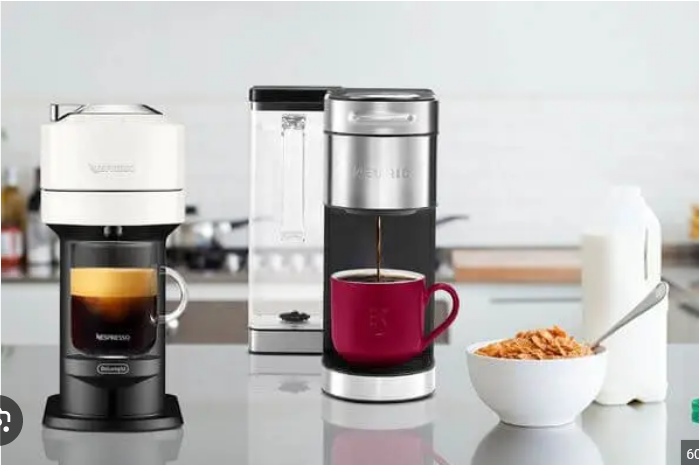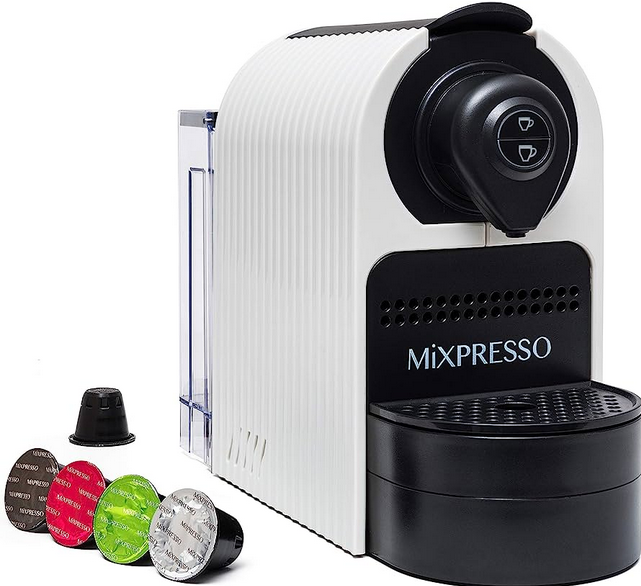Coffee lovers have seen a significant shift in brewing methods. The recent rise of single-serve pod machines has revolutionized the way we consume coffee, offering a convenient and quick method to enjoy a cup of coffee.
This article explores the rise of K-Cups and Pod Machines, their brewing process, and the ongoing debate around their environmental impact.
| Key Takeaways | |
|---|---|
| 1 | K-Cups and Pod Machines have revolutionized coffee brewing, offering convenience and variety. They have had a significant impact on the coffee industry. |
| 2 | The environmental impact of single-use coffee pods is a major concern. While efforts are being made to make the pods more sustainable, there are still challenges to overcome. |
| 3 | Consumer awareness about the environmental impact of coffee pods is growing. This could influence future trends in coffee consumption and push for more sustainable options. |
The Evolution of Coffee Brewing
Coffee brewing has a rich history, with traditional methods varying across different cultures. From the Turkish Ibrik, a small pot used to boil finely ground coffee, to the Italian Espresso machine, each method has its unique charm and flavor profile. However, these methods often require time, skill, and effort, which may only sometimes be feasible in our fast-paced lives.

The advent of coffee machines brought a significant change, offering a more convenient and consistent way to brew coffee. These machines automated the brewing process, reducing the need for manual intervention.
However, the real game-changer was the introduction of single-serve coffee machines, which took convenience to a new level.
The Rise of Single-Serve Pod Machines
Single-serve pod machines, such as K-Cups and Pod Machines, have become increasingly popular in recent years. These machines use pre-packaged coffee pods or capsules, which are inserted into the machine to brew a single cup of coffee. It eliminates the need to measure coffee grounds and allows for various flavors and types of coffee to be brewed at the push of a button.
The convenience factor is a significant reason behind their popularity. With these machines, brewing coffee is as simple as popping in a pod and pressing a button. There’s no mess, no fuss, and you get a perfectly brewed coffee every time. This convenience has made them a favorite in homes and offices, where people value speed and ease of use.
The rise of single-serve pod machines has had a profound impact on the coffee industry. Companies like Keurig, with their K-Cups, have seen tremendous growth. According to the National Coffee Association, 40% of coffee drinkers in the U.S. owned a single cup coffee brewing machine highlighting the significant shift in consumer preferences.
However, this revolution in coffee brewing has its controversies. The environmental impact of single-use coffee pods has been a topic of debate, raising questions about the sustainability of these machines. As we delve deeper into this topic, we’ll explore the brewing process of these machines, their environmental impact, and the ongoing debate around their use.
The Brewing Process
The brewing process of K-Cups and Pod Machines is a marvel of modern technology. These machines use a combination of pressure, heat, and time to extract the coffee’s flavor from the pod and into your cup. Here’s a simplified step-by-step process:
- Insert the coffee pod into the machine.
- The machine pierces the pod’s top and bottom.
- Hot water is forced into the pod, extracting the coffee.
- The brewed coffee is dispensed into your cup.
The Environmental Impact of K-Cups and Pod Machines
The role of technology in enhancing this brewing process cannot be overstated. The precise control over the brewing parameters ensures a consistent cup of coffee every time. Furthermore, the variety of coffee pods available allows you to enjoy different types of coffee, tea, and other beverages using the same machine.

However, the convenience of single-serve pod machines comes at an environmental cost. The primary concern is the waste generated by the single-use coffee pods. Most coffee pods are made of plastic and aluminum, which are not biodegradable. Given the popularity of these machines, millions of these pods end up in landfills each year, contributing to the global plastic waste problem.
Manufacturers have made efforts to mitigate this environmental impact. Some companies have introduced recyclable or compostable coffee pods. However, the recycling process for these pods could be more straightforward, requiring the user to separate the pod’s components, which often doesn’t happen.
Consumer awareness and response to this issue have been mixed. While some consumers have switched to more sustainable coffee brewing methods, many continue to use single-serve pod machines due to their convenience.
However, a study suggests that consumer awareness about the environmental impact of coffee pods is growing, and this could influence future trends in coffee consumption.
Conclusion
In conclusion, K-Cups and Pod Machines have revolutionized how we brew and consume coffee. Their rise reflects a broader trend towards convenience and variety in our food and beverage choices.
However, the environmental impact of these machines is a pressing issue that needs to be addressed. As consumers, we have a role to play by making informed choices and pushing for more sustainable options.
People also ask
When did K-Cups become popular?
K-Cups became popular in the mid-2000s with the launch of Keurig’s home brewing system. Their convenience and variety quickly made them a favorite among coffee drinkers.
What is the main difference between K-Cups and pods?
K-Cups and pods are both types of single-serve coffee, but they are used in different machines. K-Cups are designed explicitly for Keurig machines, while pods can be used in various pod machines.
What are the benefits of K-Cups?
The benefits of K-Cups include convenience, consistency, and variety. They allow you to brew a single cup at one push of a button, with a wide range of flavors and coffee types to choose from.

Written by Carla – Coffee Writer and Researcher at MyCoffeeBeanz.com
Carla has a long association with coffee and one of her fondest childhood memories is the wonderful aroma of coffee beans ground daily by her Italian father to start his working day. As a full time writer and researcher in the coffee industry, Carla is committed to providing well researched and written coffee-related content for our readers. More about Carla
